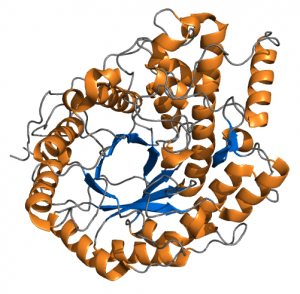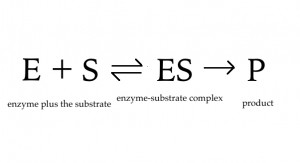This is the final installment of the Enzymes for Brewers series.
Barley seed can sprout at temperatures as low as 34 °F (1.1 °C). The seedlings can survive overwinter at temperatures below freezing, although the plant does not grow at these temperatures. So, the enzymes in barley are active as low as 34 °F (1.1 °C). The amylase enzymes we use in brewing slowly turn the starch in this seed into sugar, which is used as fuel for germination and early growth. Eventually, the first leaf unfurls, and photosynthesis begins supplying the plant with sugar as the starch stores in the seed are depleted.



Recent Comments